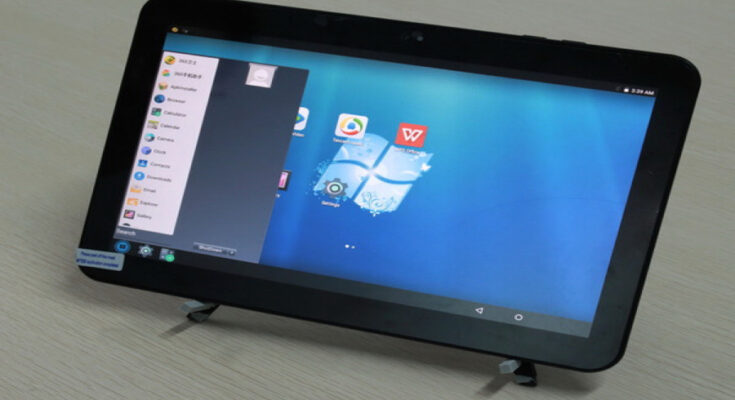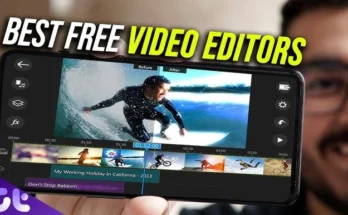In the rapidly evolving landscape of technology, Google Lens stands out as a revolutionary tool that seamlessly integrates the physical and digital worlds. This cutting-edge application, developed by Google, harnesses the power of artificial intelligence (AI) and machine learning to provide users with an unparalleled visual search experience. In this comprehensive guide, we will delve into the intricacies of Google Lens, exploring its origins, capabilities, and the myriad ways it is reshaping how we interact with the world around us.
I. The Genesis of Google Lens
Google Lens made its debut in 2017, marking a significant leap forward in the realm of visual search technology. Originally introduced as a feature within the Google Photos app, Lens quickly garnered attention for its ability to recognize and analyze objects in images. As technology advanced, Google Lens evolved into a standalone application, expanding its scope and capabilities.
The underlying technology that powers Google Lens is a sophisticated combination of computer vision, machine learning, and augmented reality. This potent blend enables the application to understand and interpret the visual world, offering users a wealth of information about their surroundings.
II. Features and Capabilities
A. Visual Search
At its core, Google Lens is a visual search engine. Users can point their smartphone camera at objects, text, or even landmarks, and Google Lens will identify and provide relevant information. This feature proves invaluable for tasks such as translating foreign languages, identifying plants and animals, or learning more about historical landmarks.
B. Text Recognition and Translation
One of the standout features of Google Lens is its ability to extract and understand text from images. Users can capture text with their camera, and Google Lens will not only recognize the text but also offer options for translation. This proves particularly useful for travelers navigating unfamiliar languages or students grappling with foreign language assignments.
C. Product Recognition and Shopping
Google Lens transcends traditional search methods by allowing users to shop visually. Pointing the camera at a product, such as a pair of shoes or a piece of furniture, triggers Google Lens to search for that item online. Users can then compare prices, read reviews, and make informed purchasing decisions, all without typing a single word.
D. Landmark Recognition
Tourists and history enthusiasts rejoice – Google Lens can identify landmarks and provide detailed information about them. By simply pointing the camera at a monument or building, users can access historical facts, architectural details, and even related articles, enhancing the overall learning experience.
E. Restaurant and Food Recognition
Ever found yourself curious about a dish on a menu but unsure about its ingredients or nutritional information? Google Lens alleviates this curiosity by allowing users to scan menus and dishes. The application identifies the dish, offering details such as ingredients, preparation methods, and sometimes even recipes.
F. QR Code and Barcode Scanning
Simplifying the process of accessing information, Google Lens can scan QR codes and barcodes. This feature is not only convenient for accessing websites or promotions but is also a powerful tool for inventory management and comparison shopping.
III. Integration with Google Ecosystem
As Google Lens continues to evolve, its integration with other Google services and applications deepens. The seamless connectivity within the Google ecosystem enhances user experience and offers a cohesive, interconnected digital environment.
A. Google Photos
The roots of Google Lens in Google Photos remain strong. Users can access Lens directly from their photo library, enabling them to extract information from images, identify objects, and even copy text from pictures.
B. Google Search
Google Lens integrates seamlessly with the broader Google Search functionality. Users can conduct web searches based on objects or text identified through the Lens application, expanding the scope of their digital exploration.
C. Google Maps
Navigation takes on a new dimension with Google Lens integrated into Google Maps. Users can point their cameras at street signs, storefronts, or notable landmarks, and Google Lens provides relevant information, making navigation more intuitive and informative.
D. Google Assistant
Google Assistant, the voice-activated virtual assistant, complements Google Lens. Users can initiate Lens directly from Google Assistant, creating a hands-free and conversational experience. This integration further exemplifies the interconnected nature of Google’s suite of services.
IV. Advancements in AI and Machine Learning
Google Lens’s ability to interpret and understand the visual world is a testament to the advancements in AI and machine learning. The underlying algorithms continuously improve through the analysis of vast datasets, enabling Lens to recognize a broader range of objects and provide more accurate information.
The application’s machine learning capabilities extend to user behavior analysis. Google Lens learns from the user’s interactions, tailoring its responses and suggestions based on individual preferences and search history. This personalized approach enhances the overall user experience and showcases the adaptability of AI-driven technologies.
V. Privacy Concerns and Mitigations
As with any technology that involves data collection and analysis, privacy concerns inevitably arise. Google has implemented measures to address these concerns, emphasizing user control over data and transparency in its practices. Users can manage permissions for Google Lens, controlling when and how the application accesses the camera and other device features.
Additionally, Google continually updates its privacy policies and provides users with clear information about the data collected and how it is utilized. These efforts contribute to building trust between users and the technology, a crucial aspect in the widespread adoption of AI-powered applications.
VI. Future Prospects and Emerging Technologies
The trajectory of Google Lens points towards a future where visual search becomes an integral part of our daily lives. As technology continues to advance, we can anticipate further enhancements to Google Lens, both in terms of its capabilities and integration into emerging technologies.
A. Augmented Reality (AR) Enhancements
The integration of augmented reality (AR) into Google Lens opens up new possibilities for immersive experiences. Imagine pointing your camera at a historical site, and Google Lens overlays a virtual tour guide providing historical information, images, and even interactive elements. This fusion of the physical and digital realms represents the next frontier for visual search applications.
B. Enhanced Object Recognition
Future iterations of Google Lens are likely to boast improved object recognition capabilities. As AI algorithms become more sophisticated, the application will be able to identify an even broader range of objects with higher accuracy, making it an indispensable tool for users across various domains.
C. Integration with Wearable Devices
The rise of wearable devices presents an opportunity for Google Lens to extend its reach beyond smartphones. Integration with smart glasses or other wearable devices would allow users to access information seamlessly, with the potential for hands-free interactions. This evolution aligns with the broader trend of making technology more accessible and integrated into our daily lives.
D. Global Expansion and Multilingual Support
Google Lens has already demonstrated its utility in various regions and languages. However, future developments may see an expansion of language support and cultural context awareness. This would make Google Lens an even more inclusive tool, catering to users worldwide and further bridging the gap between diverse linguistic and cultural landscapes.
VII. Conclusion
In the span of a few short years, Google Lens has transformed from a promising feature within Google Photos to a standalone application at the forefront of visual search technology. Its capabilities, ranging from text recognition to product identification, showcase the potential of AI and machine learning in reshaping how we interact with the world.
- As Google Lens continues to evolve and integrate with other Google services, it becomes an indispensable tool for users seeking information in a visually intuitive manner. The advancements in AI, coupled with a commitment to user privacy, position Google Lens as a leader in the visual search space.
- Download for android




